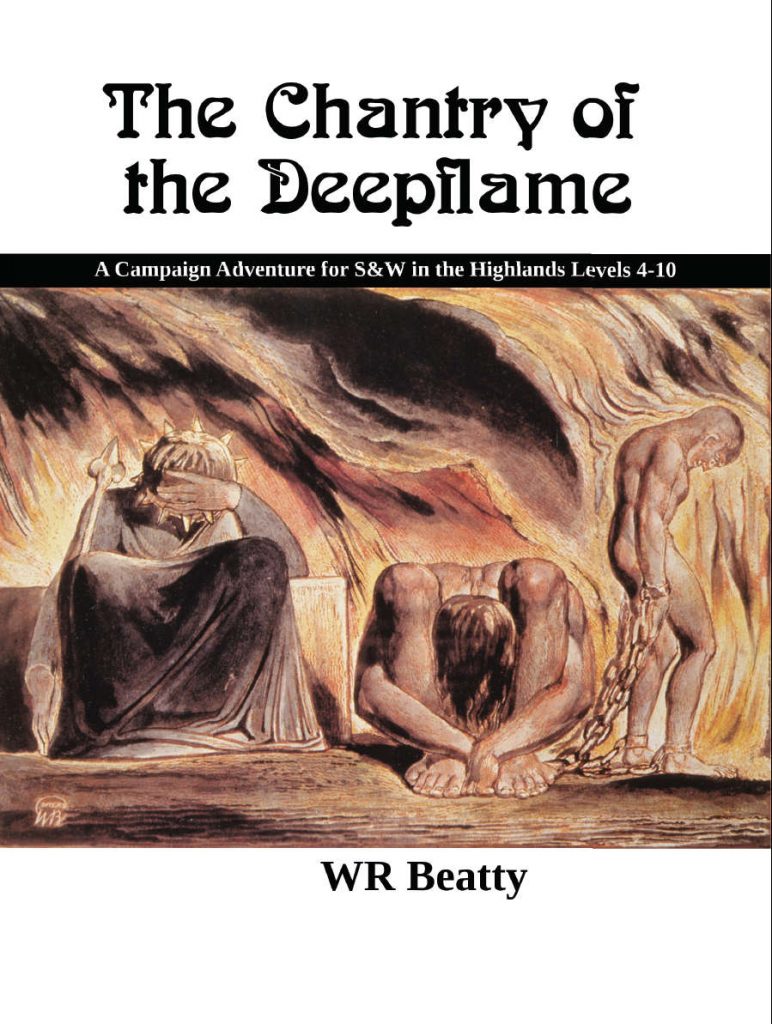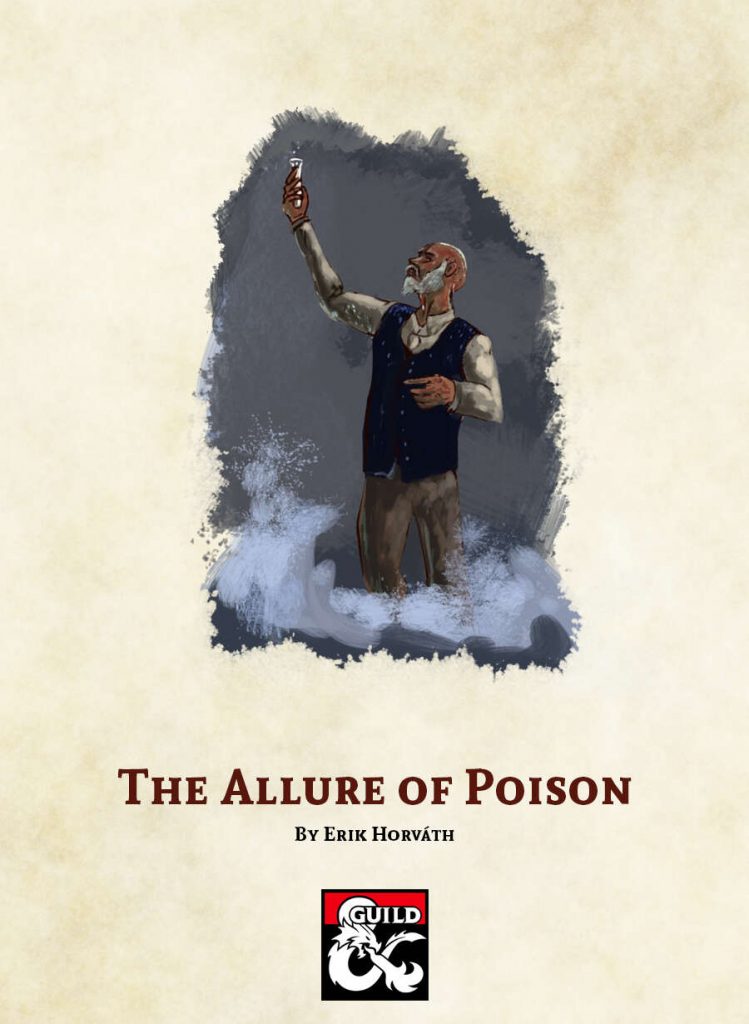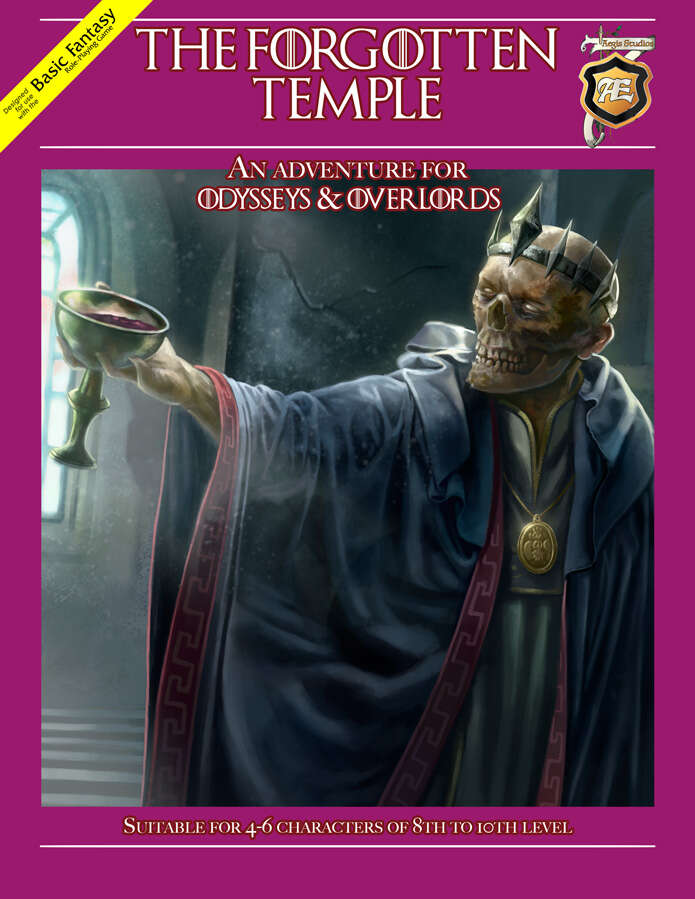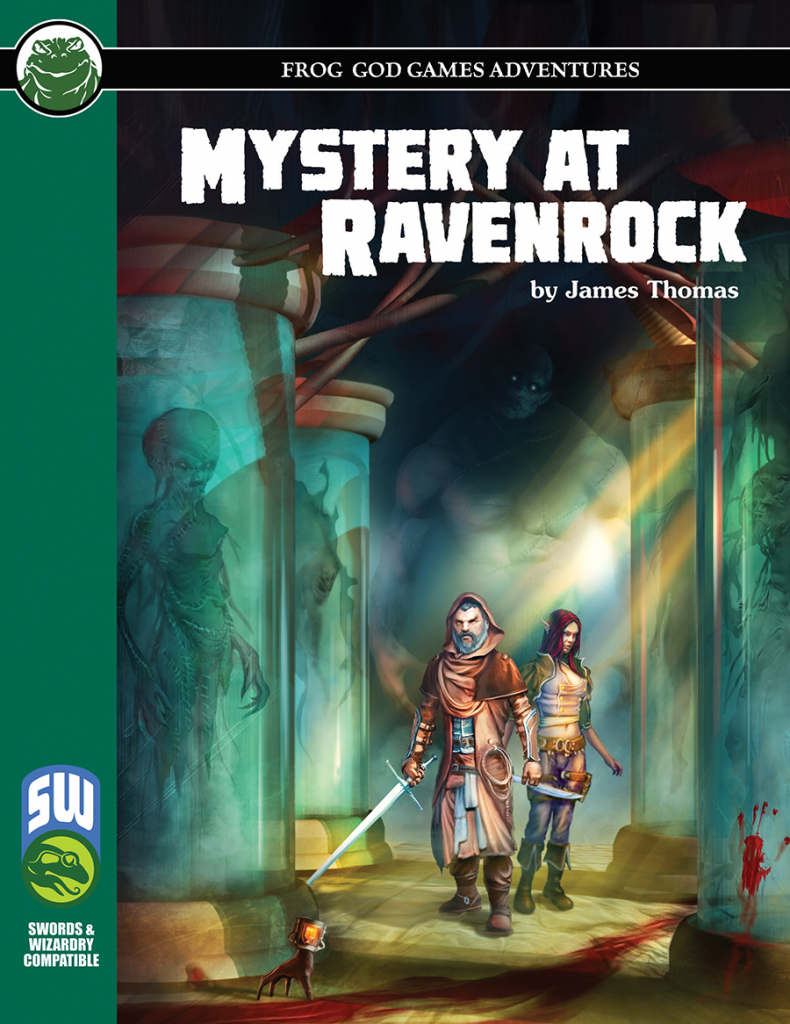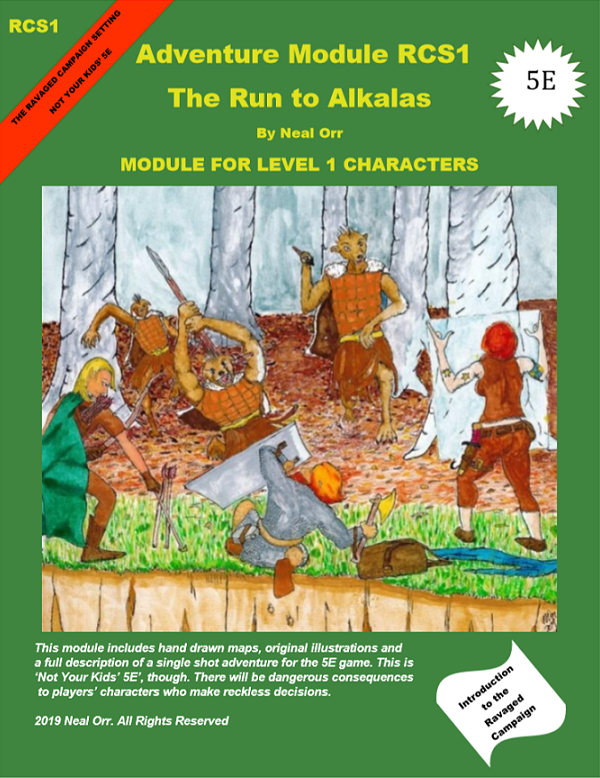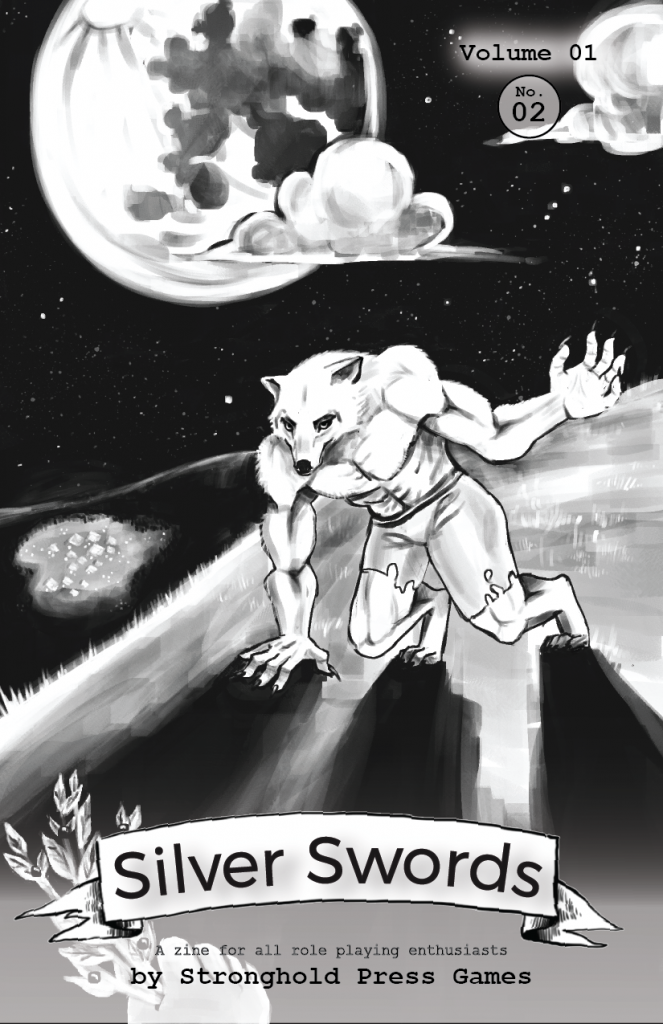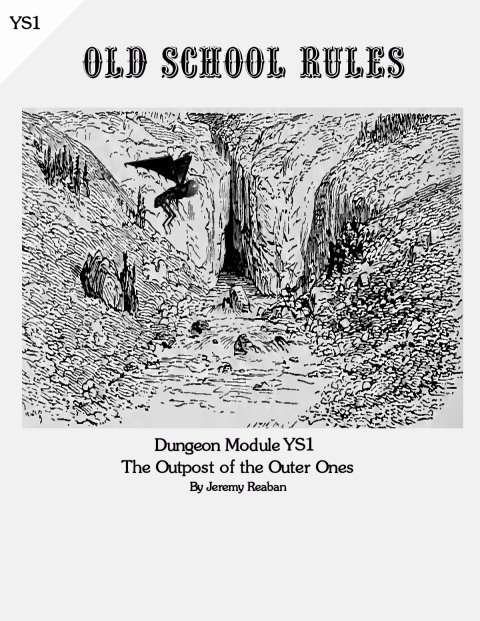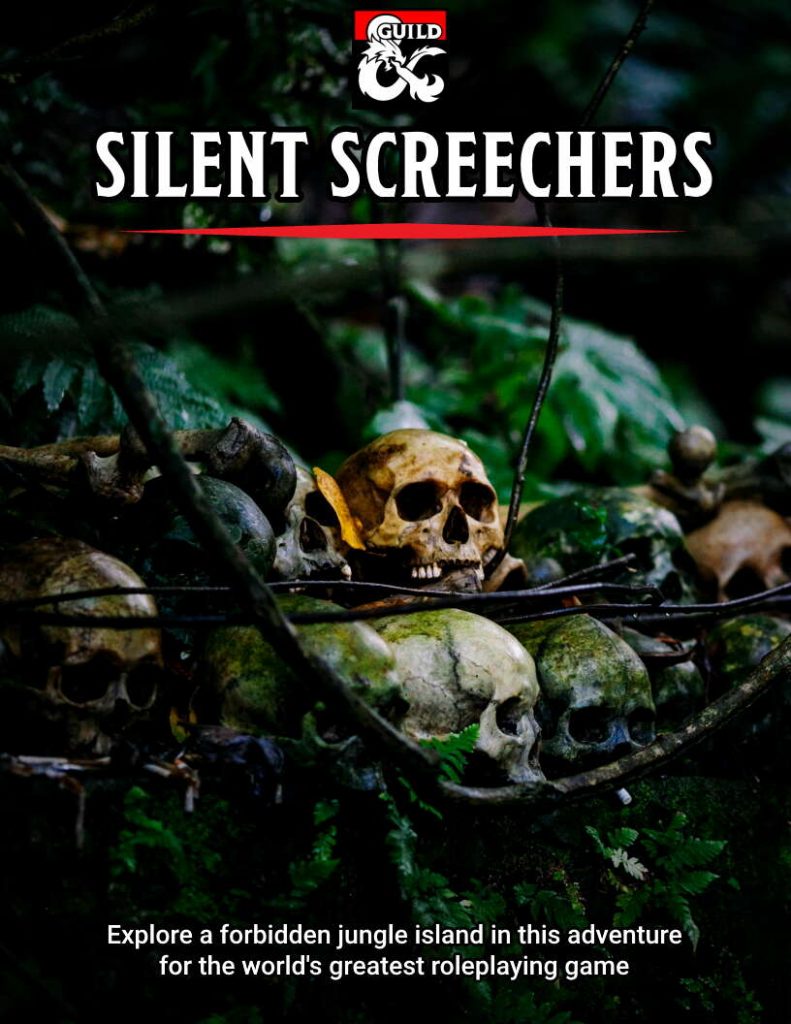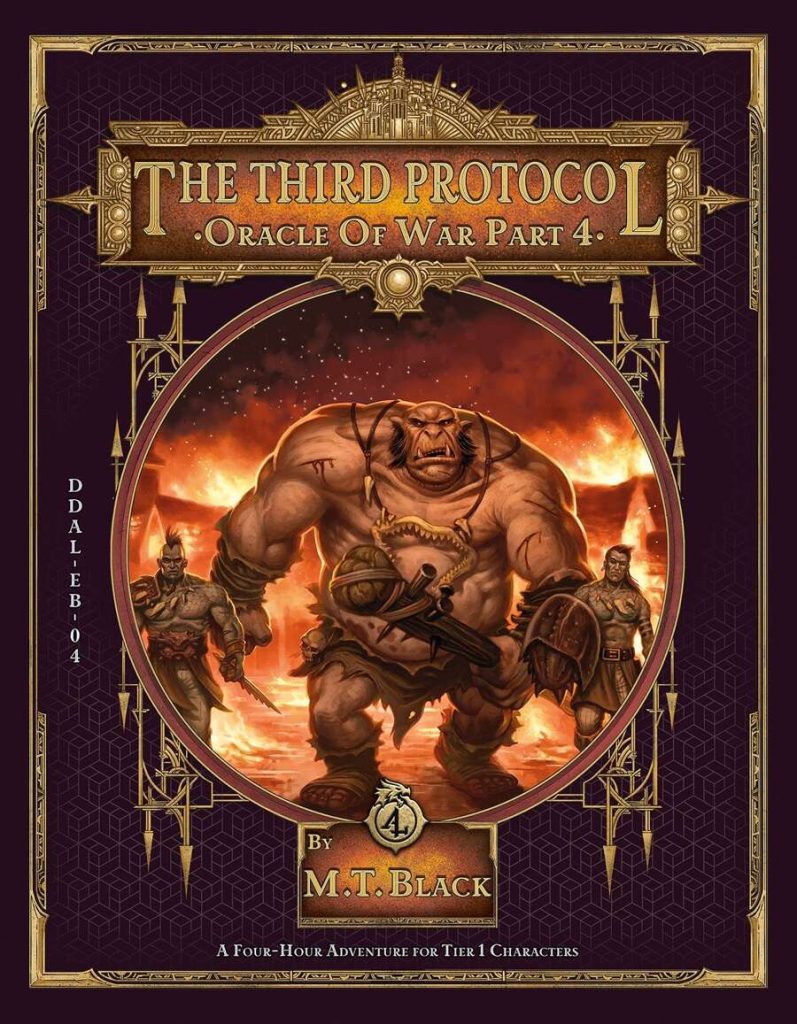
MT Black Self published 5e Level 4
The Oracle of War has been recovered from the Mournland. Its creators respond by activating the third protocol, an instruction to recover the device and eliminate all who know of its existence. As night falls, a posse of assassins step off the lightning rail with orders to raze Salvation to the ground and retrieve the Oracle. T
This thirty page adventure uses eleven pages to describe a cat and mouse combat situation in a small town. The series begins to pull at the seams as the if-then’s on previous events begin to get complex and inconsistencies begin to multiply. It does an ok job of presenting an environment, but could be significantly better in how it arranges the cat and mouse play. I expect better.
The newspaper handouts continue to be a standout with this series. It presents a kind of frontier/western small town of scavengers very well. Reminds me a lot of Deadwood. I want to adventure in this place.
The town is under attack from a group of assassins and the players have to sneak through it, finding advantages and taking out the NPC attackers one by one. NPC’s give hints on where to find advantage while the party attempts to take out the attackers one by one.
Four adventures in and the series is starting to pull at its seams. There are a lot of previous events that the players could have participated in. This results in a lot of if-then statements. If the paty did X in a previous adventure then Y also happens, and so on. These take up a decent amount of space and feel a little perfunctory.
Logical inconsistencies also creep in, as well as lost opportunities. A huge pack of death dogs prowl outside of the town and attack anyone who tries to leave, wich serves as a good example. If this had been foreshadowed in earlier adventures then it would have come off better. Likewise, the sheriff of the town, which the party has had little to no interaction with and is seldom mentioned, dies very early in the adventure, off screen. Without any sort of bond to him it lessens the impact. And your series ally, Kalli, who is listed as loyal to a fault for her friends, betrayed you in the last adventure. But f you write her a letter she appears outside the town to make up with you. How did the letter get to her, since you’re on the way to town? Who knows. The letter thing is a good idea, but the timeline just doesn’t support it, since you start on your journey back in to town. It was a perfunctory addition to the end of the last adventure and is a good idea, but the adventure just doesn’t support it.
I’m left to wonder just how much planning of the story arc goes in to these beforehand. It would be much better, running it as written, to wait until the entire thing has been published, buy them all, and then plan out a campaign. But then you wouldn’t be playing week to week as they come out, as the AP is intended to be run. And you’d have to do a lot of work. Getting these things written beforehand and then doing an edit pass on them and THEN releasing week by week would have been a better release methodology and resulted in a more integrated and natural adventure, since the foreshadowing can be done right. As written, things just happen without the full payoff. Foreshadowing the death dogs, a chance for the letter to be delivered, better integration of the sheriff and the town elements, etc.
You enter the town, go to the market and have a couple of fights to get the artifact back and/or try to sell it. Then the assassin gang shows up on the train and yells for you to give the artifact over to them, or they will start killing people. And they do, every ten minutes and then every minute at the climax. That’s good. There’s no focus on it, and guidelines could have been better, with more detail, but it’s a decent idea for an event timer.
The map of the town is simple line drawings, with a p[layer handout with locations noted by key, but it also would have been better if the town building labels would have been put on the buildings in addition to the key. It’s a more natural way to present the town key. “Whats next door?” well, let me consult the key … Likewise the NPC summary table at the back is ok; it’s got some good entires that describe a personality or goal, but also has a lot of bad ones with just facts like “retired adventurer” that doesn’t focus on actual play.
It’s nicely cross referenced, but there are some misses, like referring to “the provisioner” instead of listing his name. That mean that, during the conversation, you have to go look up his name.
The specificity is an issue. The adventure does well when its specific and is less well when it does not. One dudes got wolverine claws that he scrapes along buildings. That’s good. Another possibility is the characters come in to a shop and it has one of the assassins drawing the shopkeep in a tub of water … a shopkeep that then will assist you. This is all great and the adventure could have used more of it. A short little table for each of the (solo) assassins that has them doing something despicable or some such, for the party to interact with. That would then present the town key and support the DM in running the more free-form environment tha the adventure is trying to achieve. (For the second time in this series … episode 2 also had the party sneaking through a town tryin go take out overwhelming odds.) A little advice to get the townspeople on your side would have been nice; as is they all wait around to be killed.
In another part of the adventure, before the assault, the party is at a market, with three shopkeeps, but only the general series overview of the shopkeeps is presented instead of a better “this is how they react to the situation of the party trying to sell the box.”
This feels like multiple authors were involved. The first chunk is more disconnected and has most of the consistency and if/then issues. The main section is better put together, and has the specificity that there is. That main section could have used a better edit to take care of what issues there are, while the first chunk is terrible. I assume that part was done by some “guiding hand.” A guiding hand that need to find a better way to preset things. A MUCH better way.
It’s better than the AL stuff in the past, but that’s not saying much. I expect better of MT.
This is $5 at DMSGuild. The preview is six pages. The last two show the kind of mess of the first chunk. A better preview would have also showed an encounter description or two from the main adventure chunk.
https://www.dmsguild.com/product/305024/EB04-The-Third-Protocol?1892600


